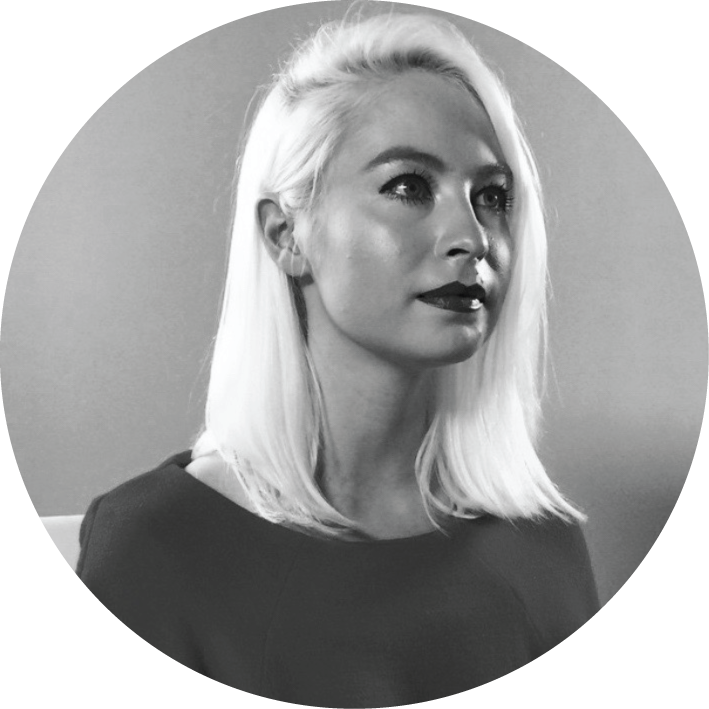Name:
Meredith Mowder
Department:
Project Title:
Art After Dark: Performance in Downtown New York, 1978-1988
Meredith Mowder specializes in postwar art, particularly performance art and crossovers between music, dance, theater, and new media. She is a former Enhanced Chancellor’s Fellow at the Graduate Center and in addition to the Connect New York Fellowship, she has received numerous awards for her research including the J. Hackman Research Fellowship at the New York State Archives, the Ralph Donald Award from the Mid-Atlantic Popular and American Culture Association, the Marian Goodman Fellowship, and the Knickerbocker Award in American Studies. Meredith teaches art history at Hunter College and is a former Joan Tisch Teaching Fellow at the Whitney Museum of American Art (2013-2017). She has written for The Brooklyn Rail and PAJ, contributed to numerous other publications and museum catalogues, and is the editor of the first monograph on the interdisciplinary performance art duo, Fischerspooner.
Project
In the decade between 1978 and 1988, over ten new nightclub-performance venues opened in the twelve square blocks comprising New York City’s East Village, providing nightly entertainment for and by a community of young artists. Attempting to convey the flurry of artistic activity, critics mythologized downtown as the “Elysian fields,” the scene as “phenomenal,” spoke of its “aura” and “mystical vitality,” but eschewed any nuanced understanding of the political, economic, and social forces at play in its construction. Even with the benefit of hindsight, little critical headway has been made in assessing why such a scene developed and the type of performances that resulted, beyond citing record numbers of art school graduates and cheap rents. Most art historical attention on downtown art in the 1980s has focused on neo-expressionist painting, graffiti art, and alternative spaces, but there has been scant analysis of performance’s central role in the development of the scene and its market, let alone of the works themselves.
By the late 1970s, however, it became increasingly evident that performance was the connective glue of the downtown community. Nightclub performances were crucial in the construction of this community, creating a marketplace for the production and consumption of new cultural content. The work was characteristically entertaining (prop-filled, bizarre, and hilarious) and developed in tandem with a downtown performance community built on shared (and pleasurable) social, symbolic, and economic exchanges between performer and audience. In search of growth through wider audiences, this new style of campy and flamboyant performance art begun in nightclubs, and its market continued to expand with performers moving into large concert hall venues like the Brooklyn Academy of Music (BAM) and eventually onto cable television.
Exposing the long-ignored economics of performance art, this dissertation argues that between the emergence of punk and the art market boom of the 1980s, performance found a way to create and profit from a market economy, despite the medium’s ephemerality. This goes against the two dominant and polarized interpretations of this work.On the one hand is the claim that the work is unabashedly complicit with big capital and therefore with the gentrification of downtown. On the other hand is the belief that downtown performances parodied the market, accruing symbolic capital within a ‘restricted field,’ which by the mid-1980s was usurped by real capital (as evidenced by the rise of the art market and ‘crossover’ acts like Laurie Anderson, Ann Magnuson, and Eric Bogosian). Certainly, these performers accrued symbolic capital; however, I contend that they were never operating within a ‘restricted’ field, but rather consciously maneuvering to create an unprecedented market for performance. Thus, the growth of performance in the 1980s owes its success to neither ‘selling out’ nor subversion, but rather to the entrepreneurial creation of what I call a ‘market-community,’ a community constituted by shared practices of production and consumption, and emblematic of the larger economic shift towards affective and immaterial labor in our post-Fordist service economy. Indeed, one can neither sell-out in nor subvert the market one produces, sells, and consumes.
Each chapter of this dissertation charts the growing visibility of and market for performance art in downtown New York City. The Connect New York Fellowship supported the completion of Chapter One of this dissertation titled, “Living in Potatoland: Funding, Class, and Community in Downtown Performance.” Starting in the 1970s, several performing artists like Robert Wilson and Stuart Sherman, were on the roster of newly-created “cluster” performing arts management firms like Performing Artservices Inc., which took care of fiscal management, fund raising, grant writing, contract negotiation, and publicity, among other services. Most significantly, I argue, Performing Artservices’ roster formed a new elite class of fiscally-adept ‘downtown’ performance artists, which made it increasingly difficult for younger artists who lacked this assistance to receive support for their work. By studying grant applications and the council correspondences of NYSCA, the Rockefeller Archives, the Ford foundation, and others, this chapter traces the distinct shift in the character of avant-garde performance in downtown New York City, from the development of this elite class to the ‘market-community’ in the early 1980s: a new economic model generated by an enterprising younger generation in downtown nightclubs.
While in residency at the New York State Archives, plowing through boxes and boxes of New York State Council on the Arts grant files, I experienced what every researcher hopes for: I found my “smoking gun.” Indeed, I have been trying to solve a mystery. In 1975, Richard Foreman’s Ontological Hysteric Theater production of Rhoda in Potatoland premiered in a small, black-box theater in downtown Manhattan. The space was rigged to quickly rotate the play’s surreal scenes: picture-less picture frames, a topsy-turvy bed, a big shoe, a small boat, a severely askew dining table, two large, bulbous potatoes, and a stage crisscrossed with white string. New York Times theater critic Mel Gusso was in the audience, and later attempted to translate his bizarre experience of the play into words: “All this is not so confusing as it sounds, although we occasionally lose our place (whenever we try to analyze what is happening).” Despite his notoriously confounding work, Foreman’s avant-garde theater was lauded by critics as “ingenious” and “inimitable,” and was awarded support from the New York State Council on the Arts, the Rockefeller Foundation, and the John Simon Guggenheim Memorial Foundation. Considering these funding institutions’ conservatism, how did this happen? Moreover, Foreman was not alone in this phenomenon of conservative support for radical art; a certain coterie of downtown New York avant-garde performing artists rose to the top during the 1970s, not only because of their imaginative and novel productions, but also because they had help.
In fact, as I discovered, the decade witnessed the creation of performing arts “cluster management firms” like Performing Artservices Inc., which took care of fiscal management, fundraising, grant writing, contract negotiation, and publicity, among other services. These firms, I argue in my dissertation, formed a new, elite class of fiscally-adept downtown performance artists who were given funding not because the institutions were necessarily familiar with their work, or liked it, but rather because “the proposal looked so good.” This system made it increasingly difficult for younger artists who lacked this kind of assistance to receive support for their work.
A prevailing presumption exists that performance art is inherently market-subverting because of its ephemerality (the lack of an object to be bought and sold). However, sticking to this belief not only denies that most everything—experiences included—costs money, but also comfortably ignores the economic forces that shape culture. By following the money and exposing the economics of performance art, my research nuances the typical dichotomy to which these downtown artists are usually prescribed, as either “sellouts” or as entirely subversive.
There is, of course, more to this story. The work that I conducted with the support of the Connect New York Fellowship forms the basis of a chapter in my dissertation titled “Art After Dark: Performance in Downtown New York, 1978-1988,” which charts the distinct growth and shift in character of avant-garde performance in downtown, from the development of this elite class to what I call a “market community” in the early 1980s: a new service-based economic model generated by an enterprising younger generation in downtown nightclubs. The fellowship has helped support my understanding of how some of the city’s most significant art communities formed and thrived.







